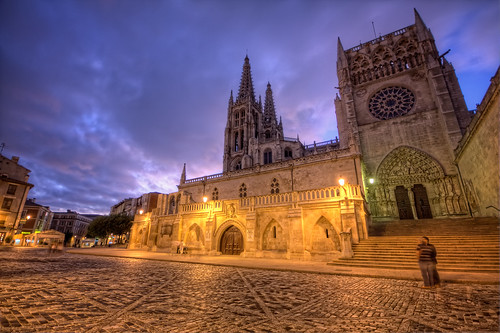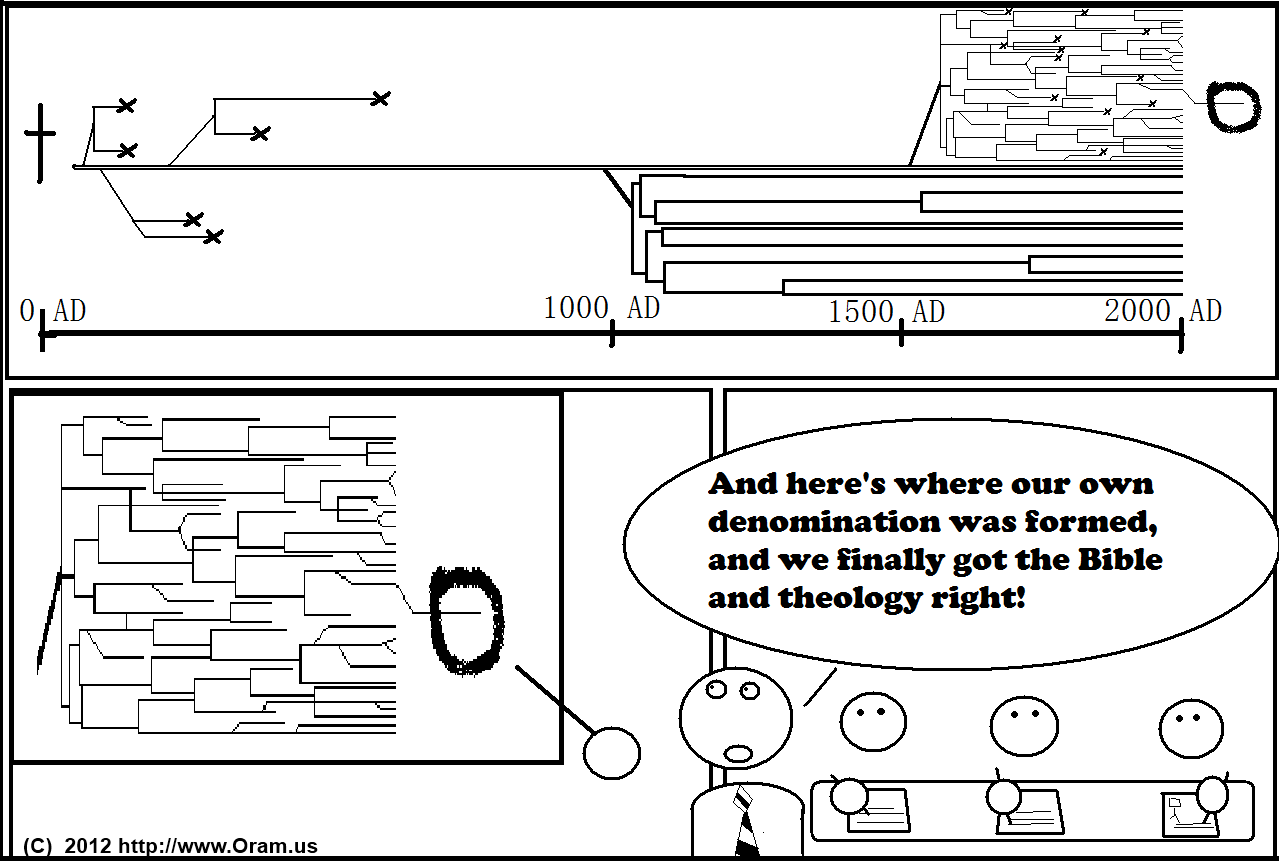 In the last 500 years in particular, however, what Christianity is has gotten…”muddy.” Cloudy. Hazy. It’s hard to tell what is what, because by modest estimates, there are between 3,000 and 30,000 different Christian denominations in the world today.
In the last 500 years in particular, however, what Christianity is has gotten…”muddy.” Cloudy. Hazy. It’s hard to tell what is what, because by modest estimates, there are between 3,000 and 30,000 different Christian denominations in the world today.
Some teach that there are no sacraments, some that there are 7. Some teach that Jesus was God and Man, some that he was just God, or just man. Some teach that all we need is the Bible alone (sola scriptura), others that we must rely on men and tradition in some form. Some assert that after the apostles died, their offices went away, others that those offices still exist and have been handed down with a special authority.
How does one cut through the dross quickly and understand which beliefs are more intrinsic to Christianity, and which are relatively modern inventions?
Like Sand in the Hourglass…
Christianity began about 2000 years ago.
At that time, the early Christians (who called themselves “Catholic”) faced persecution and death for holding to the beliefs that they held. Yet they held them nonetheless.
Over time, the church grew, much like a mustard seed grows into a large bush, and the thing today in some ways looks very different from the thing when it first began.
But if you look at the church today, you should be able to find the same essential parts 100 years ago. (1900)
And those same essential parts 100 years before that (1800).
And 100 years before that (1700).
And 200 year before that (c. 1517 – when Martin Luther nailed his 95 Theses).
And 500 years before that. (c. 1054 – at the time of the Orthodox Split)
All the way back to 1000 years before that. (c. 33 AD – with the founding of the Church at Pentecost.)
The Stream’s Source
There is a saying that, the closer to the source of a spring you get, the purer the water will be. If a spring begins in the mountains, where it first begins there will be the purest water. As it flows along, it will grow larger and accumulate more and more sediment.
So, if we want to know, or hear, the authentic voice of Christianity, then we ought to go as near the source as possible, and that means moving back in time a bit.
Now, if you were to look at the church linearly, as a line throughout history, what you would see is one, big, long line right down the middle which has been in existence since 33 AD, and which has maintained things like “apostolic succession” being valid, the “real presence” of Jesus in the Eucharist, and the existence of 7 sacraments.
You can find them in the 1st century all the way through the 21st.
Thus Clement, the Bishop of Rome in 4th century, and the 3rd successor to Peter, can say that the fact of bishops having offices is an apostolic fact:
“And thus preaching through countries and cities, they appointed the first-fruits [of their labours], having first proved them by the Spirit, to be bishops and deacons of those who should afterwards believe. Nor was this any new thing, since indeed many ages before it was written concerning bishops and deacons. For thus saith the Scripture a certain place, ‘I will appoint their bishops s in righteousness, and their deacons in faith.’… Our apostles also knew, through our Lord Jesus Christ, and there would be strife on account of the office of the episcopate. For this reason, therefore, inasmuch as they had obtained a perfect fore-knowledge of this, they appointed those [ministers] already mentioned, and afterwards gave instructions, that when these should fall asleep, other approved men should succeed them in their ministry…For our sin will not be small, if we eject from the episcopate those who have blamelessly and holily fulfilled its duties.” (Pope Clement, Epistle to Corinthians, 42, 44 (A.D. 98).)
Tertullian will use this fact of apostolic succession to distinguish the heresies that had sprouted up in the end of the 2nd century (when Christianity would still be persecuted for another 100+ years yet) from the authentic faith handed down by the apostles.
“But if there be any (heresies) which are bold enough to plant themselves in the midst of the apostolic age, that they may thereby seem to have been handed down by the apostles, because they existed in the time of the apostles, we can say: Let them produce the original records of their churches; let them unfold the roll of their bishops, running down in due succession from the beginning in such a manner that [that first bishop of theirs] bishop shall be able to show for his ordainer and predecessor some one of the apostles or of apostolic men,–a man, moreover, who continued steadfast with the apostles. …To this test, therefore will they be submitted for proof by those churches, who, although they derive not their founder from apostles or apostolic men (as being of much later date, for they are in fact being founded daily), yet, since they agree in the same faith, they are accounted as not less apostolic because they are akin in doctrine…Then let all the heresies, when challenged to these two tests by our apostolic church, offer their proof of how they deem themselves to be apostolic. But in truth they neither are so, nor are they able to prove themselves to be what they are not. Nor are they admitted to peaceful relations and communion by such churches as are in any way connected with apostles, inasmuch as they are in no sense themselves apostolic because of their diversity as to the mysteries of the faith.” (Tertullian, Prescription against the Heretics, 33 (A.D. 200)).
The Punchline
So, if you were to draw a picture of Christianity, you’d see something like the top picture above.
And if you were to take seriously the claims of many protestant churches, you’d get the picture’s below.

Top photo via Marc